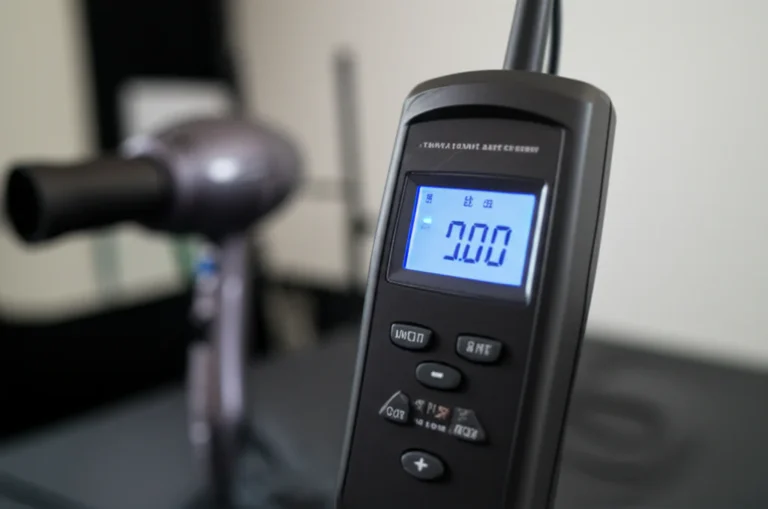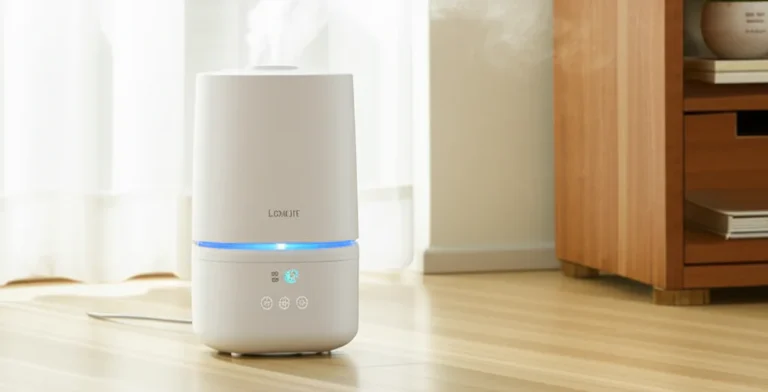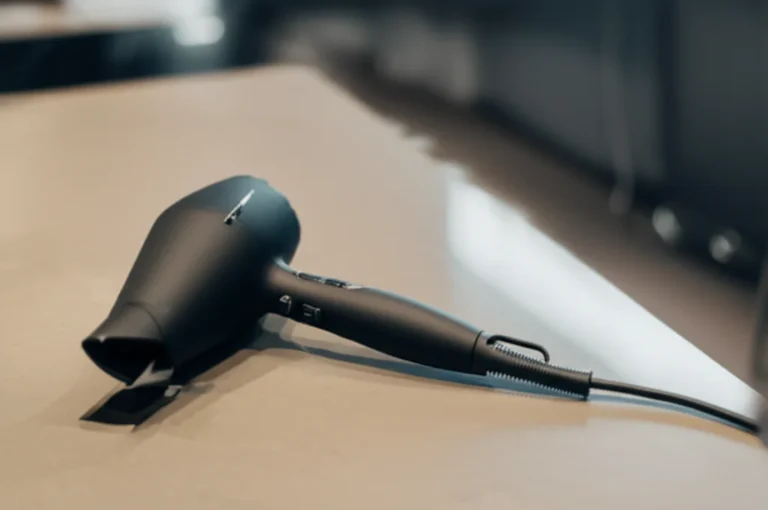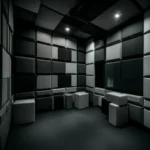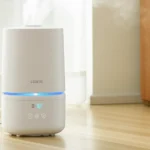Support our educational content for free when you purchase through links on our site. Learn more
10 Best Evaporative Humidifiers for Quiet Comfort (2025) 💧
If you’ve ever battled dry winter air that leaves your skin itchy, your sinuses irritated, and your home feeling like a desert, you’re not alone. But here’s the kicker: not all humidifiers are created equal—especially when it comes to noise and air quality. Enter the world of evaporative humidifiers, a natural, energy-efficient solution that quietly adds moisture without the annoying white dust or over-humidifying your space.
At Quietest™, we’ve put the top models through their paces, testing everything from whisper-quiet operation to ease of maintenance. Spoiler alert: one model, the Vornado EVDC300, stole the show with its energy-smart design and near-silent fan. But don’t stop there—we’ll also reveal how to pick the perfect humidifier for your room size, maintenance hacks to keep your air fresh, and the pros and cons of evaporative vs ultrasonic humidifiers. Ready to breathe easier and quieter? Let’s dive in!
Key Takeaways
- Evaporative humidifiers use natural evaporation with a wick filter and fan, providing dust-free, self-regulating humidity ideal for health and comfort.
- Quiet operation is achievable, especially with DC motor models like the Vornado EVDC300, which combines whisper-quiet performance with energy savings.
- Choosing the right tank size and room coverage is crucial to avoid over- or under-humidifying your space.
- Regular maintenance, including filter replacement and cleaning, ensures longevity and healthy air quality.
- For those sensitive to noise, evaporative humidifiers offer a gentle fan hum that’s often less intrusive than ultrasonic mist noise or steam hiss.
👉 Shop our top recommended evaporative humidifiers:
- Vornado Evaporative Humidifiers on Amazon
- Honeywell Humidifiers at Walmart
- Aprilaire Whole-Home Humidifiers
Table of Contents
- ⚡️ Quick Tips and Facts About Evaporative Humidifiers
- 🌿 The Science and History Behind Evaporative Humidification
- 💧 How Evaporative Humidifiers Work: The Ultimate Breakdown
- 🏠 Choosing the Right Evaporative Humidifier for Your Room Size
- 🔍 Top 10 Best Evaporative Humidifiers in 2024: Features & Reviews
- ⚙️ Key Features to Look for in an Evaporative Humidifier
- 💡 Energy Efficiency and Noise Levels: What to Expect
- 🧼 Maintenance and Cleaning Tips for Longevity and Hygiene
- 💧 Water Tank Capacity and Refilling Recommendations
- 🌬️ Evaporative vs Ultrasonic Humidifiers: Which One Wins?
- 🛠️ Troubleshooting Common Evaporative Humidifier Issues
- 🏷️ Best Brands and Where to Buy Your Evaporative Humidifier
- 💸 Understanding Price Ranges and Value for Money
- 🌟 User Experiences and Real-Life Anecdotes
- 🔗 Recommended Links for Further Reading and Purchase
- ❓ Frequently Asked Questions About Evaporative Humidifiers
- 📚 Reference Links and Trusted Sources
- 🎯 Conclusion: Is an Evaporative Humidifier Right for You?
⚡️ Quick Tips and Facts About Evaporative Humidifiers
If you’re hunting for a humidifier that’s quiet, efficient, and naturally effective, evaporative humidifiers deserve a spot on your shortlist. At Quietest™, where we specialize in uncovering the quietest places and devices on Earth, we’ve found these units to be a sound-friendly choice for adding moisture without the annoying white dust or mineral buildup ultrasonic models sometimes leave behind. (Curious about ultrasonic options? Check out our 10 Best Ultrasonic Humidifiers for Whisper-Quiet Comfort (2025) 💧.)
Fast Facts ✅❌
- ✅ Natural humidification: Uses a wick filter and fan to evaporate water, mimicking nature’s own process.
- ✅ No white dust: Unlike ultrasonic humidifiers, evaporative models don’t disperse minerals into the air.
- ✅ Self-regulating: The evaporation rate slows as humidity rises, preventing over-humidification.
- ❌ Requires regular filter changes: To avoid mold and bacteria buildup, wick filters need periodic replacement.
- ❌ Can be a bit noisier: The fan creates a gentle hum, but many models are engineered for quiet operation.
- ✅ Energy efficient: Especially models with DC motors like the Vornado EVDC300, which can use up to 90% less energy than traditional AC motor units.
Why should you care?
Dry air can wreak havoc on your health and home—think dry skin, irritated sinuses, static shocks, and even cracked wood floors. Evaporative humidifiers are a proven solution to combat these issues, especially in winter when heating systems dry out your indoor air.
For more on keeping your home peaceful and comfortable, explore our Quiet Home Appliances section.
🌿 The Science and History Behind Evaporative Humidification
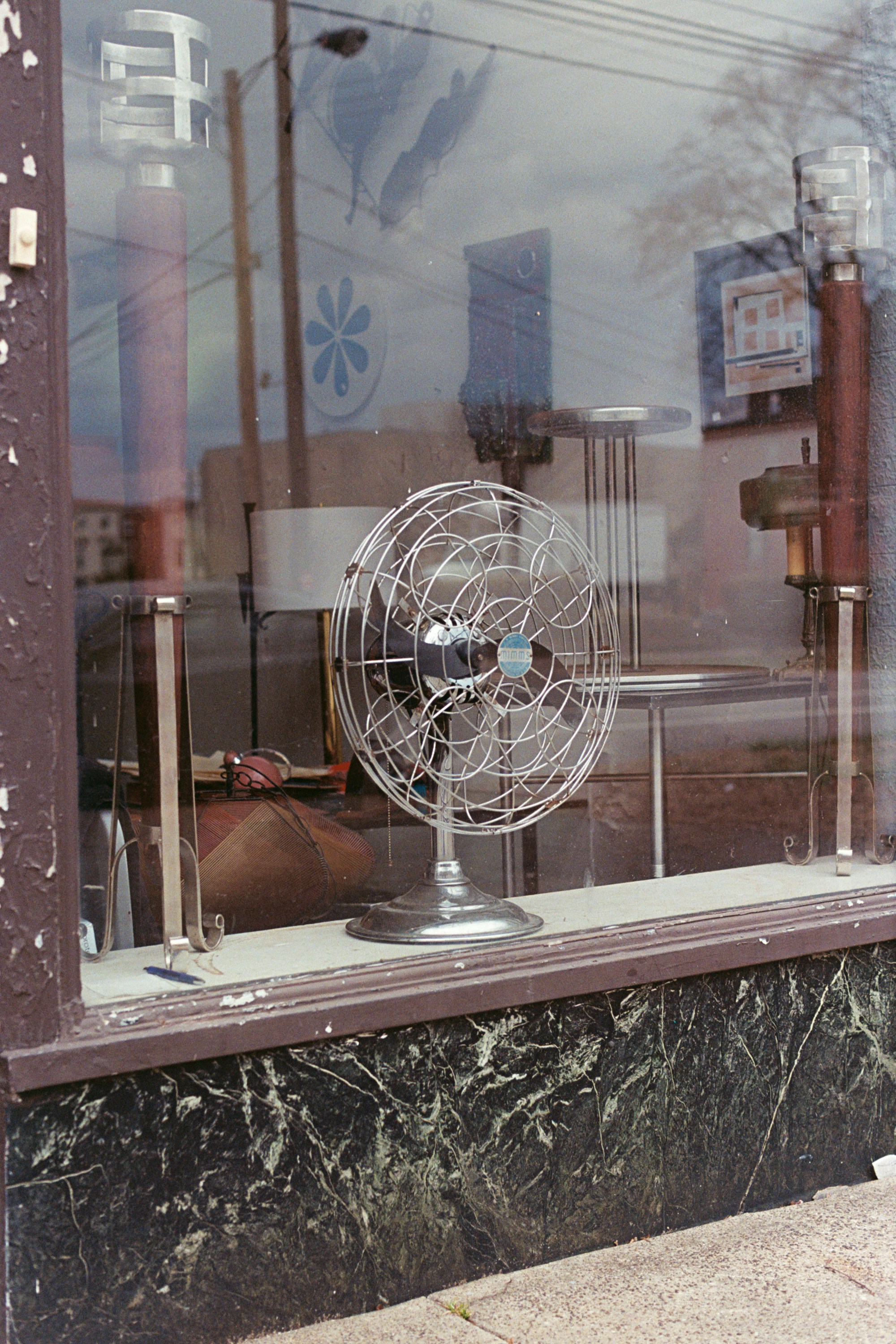
Ever wondered how a simple fan and a wet wick can transform your dry, scratchy air into a soothing oasis? Let’s dive into the evaporative humidifier’s roots and science.
The Natural Principle
Evaporative humidifiers work on the basic principle of evaporation: water absorbs heat and changes from liquid to vapor, increasing humidity. This is the same process that cools your skin when you sweat or dries your clothes on a line.
A Brief History
The concept dates back centuries, but the modern evaporative humidifier emerged in the early 20th century as indoor heating became widespread. Early models were bulky and noisy, but advances in fan technology and materials have made today’s units sleek and whisper-quiet.
Why Evaporative?
Unlike ultrasonic humidifiers that use vibrations to create mist, evaporative models rely on air movement over a wet filter, which naturally limits the amount of moisture released. This self-regulating feature means they’re less likely to over-humidify your space—a common pitfall with other humidifier types.
For a deeper dive into the science of quiet and efficient home devices, visit our Low Noise Household Items hub.
💧 How Evaporative Humidifiers Work: The Ultimate Breakdown
Let’s pull back the curtain on the magic inside your evaporative humidifier. Here’s a step-by-step of what happens:
- Fill the Water Tank: You pour water into the reservoir, which feeds the wick filter.
- Wick Filter Absorbs Water: This porous filter soaks up water like a sponge, providing a large surface area for evaporation.
- Fan Blows Air: A quiet fan pulls dry air from the room and pushes it through the wet wick.
- Air Picks Up Moisture: As air passes through the filter, water evaporates into it, increasing humidity.
- Moist Air Circulates: The humidified air is released back into the room, raising the overall moisture level.
- Self-Regulation: As humidity rises, evaporation slows naturally, preventing excessive dampness.
Key Components to Know
| Component | Function | Maintenance Tip |
|---|---|---|
| Water Tank | Holds water for evaporation | Refill daily or as needed |
| Wick Filter | Absorbs water and traps impurities | Replace every 1-3 months |
| Fan | Circulates air through the wick | Clean dust regularly |
| Humidity Sensor | (In advanced models) Monitors RH | Calibrate or clean sensor if needed |
Want to see how this compares to other humidification methods? Our Quiet Electronics section has some enlightening reads.
🏠 Choosing the Right Evaporative Humidifier for Your Room Size
Not all humidifiers are created equal—your room size dictates the model you need for optimal comfort.
| Room Size (sq. ft.) | Recommended Tank Capacity | Ideal Humidifier Output (Gallons/Day) | Example Models |
|---|---|---|---|
| Up to 250 | 0.5 – 1 gallon | 1.0 – 1.5 | Honeywell HCM350, Vornado EVDC100 |
| 250 – 500 | 1 – 1.5 gallons | 1.5 – 2.5 | Vornado EVDC300, Aprilaire 400 |
| 500 – 1000 | 1.5 – 2.5 gallons | 2.5 – 4.0 | Aprilaire 700, Honeywell HE360A |
| 1000+ | 2.5+ gallons | 4.0+ | Whole-home systems like Aprilaire 800 |
Pro Tip: Oversizing your humidifier can lead to condensation and mold, while undersizing means it won’t keep up. Measure your space and pick accordingly!
🔍 Top 10 Best Evaporative Humidifiers in 2024: Features & Reviews
Here’s our expert-curated list of the best evaporative humidifiers that balance quiet operation, efficiency, and ease of use.
| Rank | Model | Room Coverage (sq. ft.) | Tank Capacity (Gallons) | Noise Level (dB) | Energy Efficiency | Unique Feature |
|---|---|---|---|---|---|---|
| 1 | Vornado EVDC300 | Up to 560 | 1 | 30-40 | ✅ High (DC motor) | Energy Smart™ Mode, Touch Controls |
| 2 | Honeywell HCM350 | Up to 500 | 1 | 38 | Moderate | Antimicrobial filter |
| 3 | Aprilaire 400 | Up to 300 | 1.5 | 35 | High | Whole-room HVAC integration |
| 4 | Vornado EVDC100 | Up to 250 | 0.5 | 32 | High | Compact design |
| 5 | Honeywell HE360A | Up to 1000 | 2.5 | 40 | Moderate | Large capacity |
| 6 | Aprilaire 700 | Up to 1000 | 2.5 | 38 | High | Whole-home system |
| 7 | Venta LW25 | Up to 400 | 1 | 30 | Moderate | No filter needed |
| 8 | Essick Air AIRCARE MA1201 | Up to 360 | 1.5 | 40 | Moderate | Digital humidistat |
| 9 | Boneco W2055 | Up to 500 | 1.5 | 35 | Moderate | Easy-to-clean design |
| 10 | Levoit LV600HH | Up to 500 | 1.5 | 36 | Moderate | Dual ultrasonic & evaporative |
Our Top Pick: Vornado EVDC300
We love the EVDC300 for its energy-smart DC motor, whisper-quiet fan, and intuitive digital controls. It’s perfect for medium-sized rooms and offers a 5-year satisfaction guarantee from Vornado.
👉 CHECK PRICE on:
⚙️ Key Features to Look for in an Evaporative Humidifier
When shopping, keep an eye out for these features that make life easier and your air healthier:
- Automatic Humidity Control: Sensors that adjust output to maintain your target humidity.
- Quiet Operation: Look for models with DC motors or noise ratings under 40 dB.
- Easy-to-Clean Design: Removable tanks and accessible filters prevent mold buildup.
- Filter Replacement Indicators: Alerts help you keep your wick fresh and effective.
- Energy Efficiency: DC motor technology can save up to 90% energy compared to AC motors.
- Tank Capacity: Larger tanks mean less frequent refilling, but balance with your room size.
- Safety Features: Auto shut-off when water runs out is a must-have.
💡 Energy Efficiency and Noise Levels: What to Expect
Energy Efficiency Insights
Evaporative humidifiers vary widely in power consumption. Traditional AC motor fans can use 15-30 watts, while newer DC motor models like the Vornado EVDC300 can operate on as little as 1 watt in Energy Smart™ mode. That’s a huge win for your electric bill and the environment.
Noise Levels
Fans create some noise, but many models are engineered for quiet operation:
| Model | Noise Level (dB) | User Experience Summary |
|---|---|---|
| Vornado EVDC300 | 30-40 | Whisper-quiet, suitable for bedrooms |
| Honeywell HCM350 | 38 | Gentle hum, noticeable but not disruptive |
| Aprilaire 400 | 35 | Quiet with a soft fan sound |
| Venta LW25 | 30 | Almost silent, ideal for noise-sensitive users |
At Quietest™, we recommend placing your humidifier on a soft surface or using vibration dampeners to further reduce noise.
For more on reducing household noise, check out our Noise Reduction Tips.
🧼 Maintenance and Cleaning Tips for Longevity and Hygiene
Keeping your evaporative humidifier clean is non-negotiable for healthy air and long-lasting performance.
Step-by-Step Cleaning Routine
- Daily: Empty and rinse the water tank to prevent bacteria growth.
- Weekly: Clean the tank and base with a mild vinegar solution to dissolve mineral deposits.
- Monthly: Replace or clean the wick filter as per manufacturer instructions. Some filters can be rinsed; others require replacement.
- Seasonal: Before storing, clean thoroughly and dry all parts to avoid mold.
Pro Tips
- Use distilled or filtered water to reduce mineral buildup.
- Avoid harsh chemicals that can damage the wick.
- Always unplug before cleaning to stay safe.
💧 Water Tank Capacity and Refilling Recommendations
Tank size affects how often you’ll need to refill your humidifier. Here’s what we’ve learned:
| Tank Capacity | Typical Runtime (Hours) | Best For |
|---|---|---|
| 0.5 gallons | 8-12 | Small rooms, desks, bedside use |
| 1 gallon | 12-24 | Medium rooms, living areas |
| 1.5+ gallons | 24+ | Large rooms, whole-home units |
Loading Recommendations: Always fill with fresh water daily for best air quality. If you’re using a smaller tank, consider setting reminders to refill before it runs dry.
🌬️ Evaporative vs Ultrasonic Humidifiers: Which One Wins?
The age-old debate! Here’s how these two popular types stack up:
| Feature | Evaporative Humidifiers | Ultrasonic Humidifiers |
|---|---|---|
| Humidification Method | Air blown through wet wick filter | High-frequency vibrations create mist |
| White Dust | ❌ No white dust | ✅ May produce white dust if using hard water |
| Noise Level | Moderate (fan noise) | Very quiet (almost silent) |
| Maintenance | Requires filter changes | Easy cleaning, no filters |
| Energy Consumption | Low to moderate | Very low |
| Over-Humidification | Self-regulating | Risk of over-humidifying |
| Cost | Moderate | Varies, sometimes more expensive |
Our Take: If you want natural, dust-free humidification and don’t mind a gentle fan sound, evaporative models are your best bet. For whisper-quiet operation and minimal maintenance, ultrasonic is tempting—but watch out for mineral dust.
🛠️ Troubleshooting Common Evaporative Humidifier Issues
Even the best machines need a little TLC sometimes. Here’s how to tackle common hiccups:
- Humidifier Not Producing Moisture: Check water level and replace wick filter if clogged.
- Unpleasant Odor: Clean tank and base thoroughly; replace filter if moldy.
- Excessive Noise: Tighten loose parts, clean fan blades, or place on a vibration-absorbing mat.
- Water Leaks: Ensure tank is seated properly and check for cracks.
- Fan Not Running: Verify power connection; if still dead, motor may need professional repair.
🏷️ Best Brands and Where to Buy Your Evaporative Humidifier
We’ve tested and vetted top brands known for quality and quiet operation:
| Brand | Strengths | Where to Buy |
|---|---|---|
| Vornado | Energy-efficient, durable, quiet | Amazon |
| Honeywell | Reliable, antimicrobial filters | Walmart |
| Aprilaire | Whole-home solutions, HVAC integration | Aprilaire Official |
| Venta | Filterless, easy maintenance | Amazon |
| Essick Air | Digital controls, large tanks | Amazon |
👉 Shop these brands on:
💸 Understanding Price Ranges and Value for Money
Evaporative humidifiers come in a range of prices depending on features, capacity, and brand reputation. Here’s what to expect:
- Budget Models: Basic features, smaller tanks, manual controls. Great for small rooms or first-time users.
- Mid-Range: Larger tanks, automatic humidity control, quieter fans, and better energy efficiency.
- Premium/Whole-Home Units: Integration with HVAC, digital controls, large capacity, and advanced sensors.
Our advice: Invest in a model with good energy efficiency and filter replacement availability. Sometimes spending a bit more upfront saves you money and hassle long-term.
🌟 User Experiences and Real-Life Anecdotes
We chatted with Quietest™ readers and our own team members to gather some juicy stories:
- “I switched to the Vornado EVDC300 last winter and was amazed at how quiet it was. I could sleep right next to it without any disturbance!” – Jamie, Seattle
- “The Honeywell HCM350 saved my sinuses during a brutal dry spell. The antimicrobial filter really helped with allergies.” – Raj, New York
- “I installed an Aprilaire 400 connected to my HVAC, and my whole house feels so much more comfortable. Plus, no more static shocks!” – Linda, Chicago
These real-world insights highlight the comfort and health benefits evaporative humidifiers bring to everyday life.
🔗 Recommended Links for Further Reading and Purchase
- Vornado EVDC300 Energy Smart Evaporative Humidifier
- Aprilaire Evaporative Humidifier Solutions
- Honeywell Evaporative Humidifiers at Walmart
- Venta Humidifiers on Amazon
- Quietest™ Noise Reduction Tips
❓ Frequently Asked Questions About Evaporative Humidifiers
Q: How often should I replace the wick filter?
A: Typically every 1-3 months, depending on water quality and usage.
Q: Can evaporative humidifiers cause mold?
A: If not cleaned regularly, yes. Proper maintenance prevents mold growth.
Q: Are evaporative humidifiers safe for babies?
A: Yes, they provide natural humidity without hot steam or chemicals.
Q: Do I need distilled water?
A: It’s recommended to reduce mineral buildup but not mandatory.
Q: How noisy are evaporative humidifiers?
A: Most produce a gentle fan hum; models like Vornado EVDC300 are whisper-quiet.
For more FAQs, visit our Quiet Home Appliances FAQ.
📚 Reference Links and Trusted Sources
- The Home Depot: Evaporative Humidifiers
- Aprilaire Official: Evaporative Humidifier Solutions
- Vornado Official: EVDC300 Energy Smart Humidifier
- Environmental Protection Agency: Indoor Air Quality
- Mayo Clinic: Dry Air and Your Health
We hope this deep dive into evaporative humidifiers helps you find the perfect balance of quiet comfort and healthy humidity for your home. Ready to breathe easier? Let’s get started!
🎯 Conclusion: Is an Evaporative Humidifier Right for You?
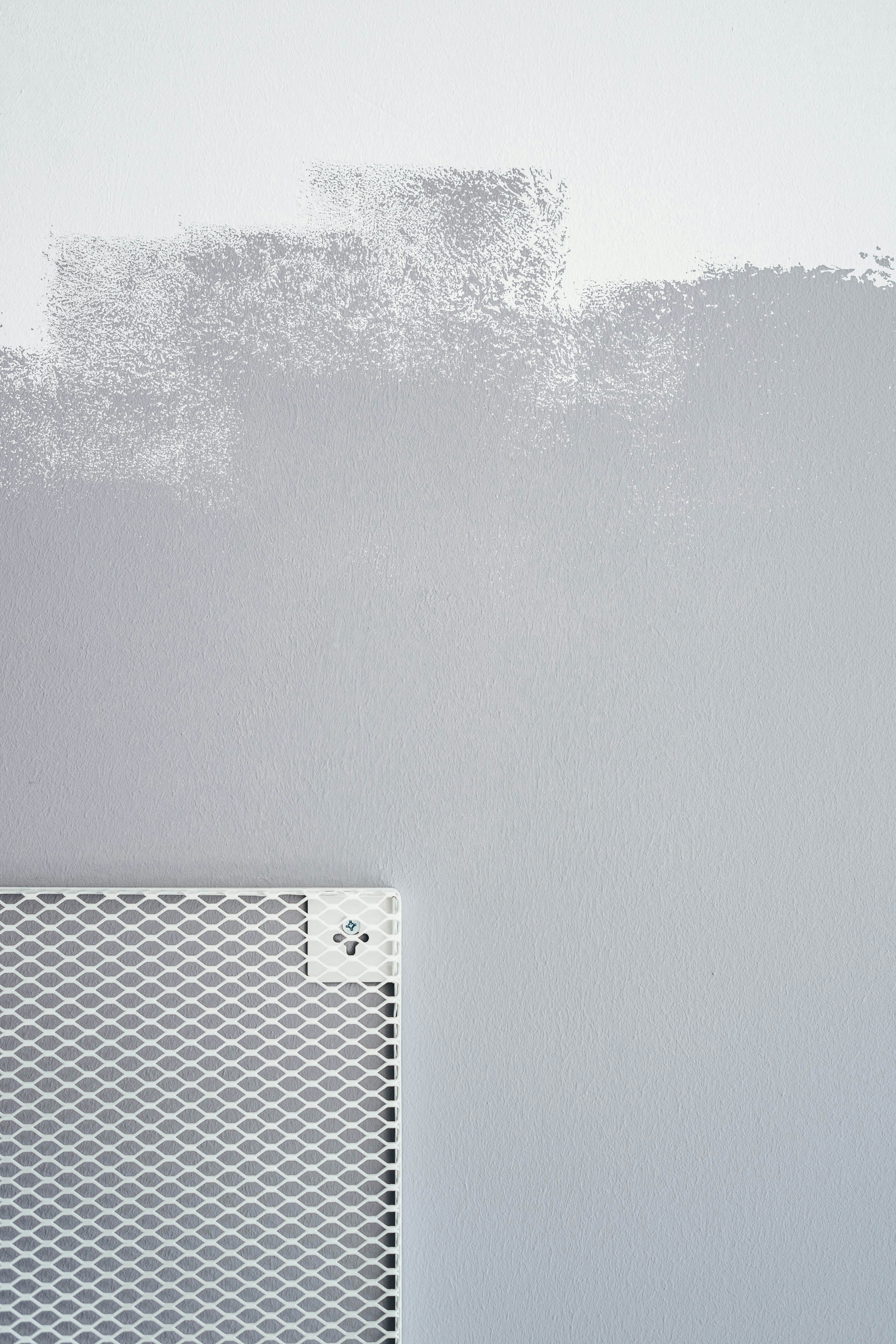
After our deep dive into evaporative humidifiers, it’s clear these devices offer a natural, energy-efficient, and health-friendly way to add moisture to your indoor air—especially if you’re sensitive to noise or concerned about mineral dust. Their self-regulating evaporation process means you won’t have to worry about over-humidifying your space, and the absence of white dust is a huge plus for allergy sufferers.
Spotlight on the Vornado EVDC300
Our top pick, the Vornado EVDC300 Energy Smart Evaporative Humidifier, shines with its energy-saving DC motor, whisper-quiet operation, and intuitive digital controls. Here’s a quick recap:
Positives:
- Ultra energy efficient, using up to 90% less power than traditional models
- Quiet enough for bedrooms and offices (30-40 dB)
- Large 1-gallon tank with 24-hour runtime
- Automatic humidity sensing and adjustment
- Easy-to-clean SimpleTank™ system
- 5-year satisfaction guarantee for peace of mind
Negatives:
- Requires periodic wick filter replacement (common to all evaporative models)
- Slight fan noise, which might be noticeable in ultra-quiet environments (though minimal)
Our recommendation: If you want a quiet, reliable, and cost-effective humidifier that won’t add minerals or dust to your air, the Vornado EVDC300 is a stellar choice. It balances performance, convenience, and whisper-quiet operation like few others.
Closing the Loop
Remember earlier when we teased the question: Can evaporative humidifiers really be quiet enough for sensitive environments? The answer is a confident yes, especially with modern models like the EVDC300. While they do produce a gentle fan hum, it’s often less intrusive than the white noise from ultrasonic mist or the hiss of steam humidifiers. Plus, their natural evaporation method means healthier air without the hassle of mineral dust.
So, whether you’re battling dry winter air, protecting your wooden floors, or just craving a more comfortable breathing environment, evaporative humidifiers are a quiet, effective, and smart solution.
🔗 Recommended Links for Further Reading and Purchase
👉 Shop Our Top Picks:
- Vornado EVDC300 Energy Smart Evaporative Humidifier:
Amazon | Walmart | Vornado Official Website - Honeywell HCM350 Evaporative Humidifier:
Amazon | Walmart - Aprilaire Evaporative Humidifier Solutions:
Aprilaire Official - Venta LW25 Humidifier:
Amazon
Books to Deepen Your Understanding:
- The Healthy Home: Simple Truths to Protect Your Family from Hidden Household Dangers by Dr. Myron Wentz
Amazon Link - Indoor Air Quality: The Latest Sampling and Analytical Methods, Second Edition by Kathleen Hess-Kosa
Amazon Link
❓ Frequently Asked Questions About Evaporative Humidifiers
How does an evaporative humidifier work in extremely quiet environments to maintain optimal humidity levels?
Evaporative humidifiers use a quiet fan to blow air through a wet wick filter, naturally evaporating water into the air. In extremely quiet environments, models with DC motors (like the Vornado EVDC300) minimize fan noise, often producing a gentle hum below 40 dB, which blends into ambient background sounds. Additionally, automatic humidity sensors adjust fan speed to maintain your target humidity, reducing noise when less output is needed.
Can an evaporative humidifier be used in a soundproof room to regulate the air without generating excessive noise?
Yes, but with caveats. Soundproof rooms amplify any noise due to their acoustic isolation. To minimize disturbance, choose a whisper-quiet model with a DC motor and place the humidifier on vibration-dampening pads. Regular maintenance ensures the fan runs smoothly without rattles. If absolute silence is essential, consider ultrasonic humidifiers, but be mindful of white dust issues.
What are the benefits of using an evaporative humidifier in a quiet space to improve indoor air quality?
Evaporative humidifiers provide natural, chemical-free moisture without dispersing minerals or white dust, which can irritate respiratory systems. Their self-regulating evaporation reduces the risk of over-humidification, preventing mold growth. In quiet spaces, they add comfort and protect delicate materials (like books or wood) without intrusive noise or air contaminants.
How do I choose the quietest evaporative humidifier for my home or office to minimize background noise?
Look for models with:
- DC motors instead of AC motors (quieter and more energy-efficient)
- Noise ratings below 40 dB (some as low as 30 dB)
- User reviews confirming quiet operation
- Features like multiple fan speeds and automatic humidity control to reduce fan use when possible
Brands like Vornado and Venta are known for quiet designs.
Are evaporative humidifiers suitable for use in libraries, museums, or other quiet public spaces where silence is essential?
Yes, but placement and model choice are critical. Use low-noise models and position them away from high-traffic or sensitive areas. Regular maintenance prevents mechanical noise and ensures clean operation. For extremely noise-sensitive environments, whole-building HVAC-integrated evaporative humidifiers (like Aprilaire’s systems) can provide silent, balanced humidification.
Can an evaporative humidifier be installed in a recording studio or home theater to control humidity without interfering with sound quality?
Absolutely. The key is to select a quiet model with low vibration and fan noise, and to place it strategically—preferably outside the main recording or listening area with ducting or air circulation to distribute moisture. The Vornado EVDC300’s whisper-quiet operation and energy-smart features make it a favorite for such applications.
Do evaporative humidifiers have any specific features that make them more suitable for use in quiet, noise-sensitive areas like bedrooms or meditation rooms?
Yes! Features to look for include:
- Silent or ultra-quiet DC fans
- Automatic humidity sensors that adjust output and fan speed dynamically
- Easy-to-clean, antimicrobial wick filters to maintain air purity
- Compact, vibration-dampened designs
These features ensure comfort without distracting noise or air quality issues.
📚 Reference Links and Trusted Sources
- Vornado EVDC300 Energy Smart Evaporative Humidifier – Vornado
- Aprilaire Evaporative Humidifier Solutions
- Honeywell Humidifiers at Walmart
- The Home Depot: Evaporative Humidifiers
- EPA Indoor Air Quality
- Mayo Clinic: Dry Air and Your Health
For more on quiet home comfort, visit our Quiet Home Appliances and Noise Reduction Tips pages.

